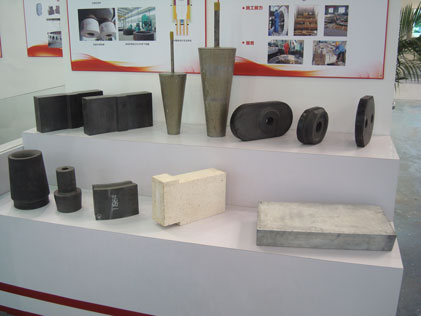Product
Fused Cast AZS Block
AZS Casting Type
AZS Ramming Materials
Fused Cast AZS TY-AZS41
Fused Cast AZS TY-AZS36
Fused Cast AZS TY-AZS33
Fused Cast Alumina Block
Fused cast Alumina Block TY-H
Fused cast Alumina Block TY-A
Fused cast Alumina Block TY-M
Fused Cast High Zirconia Block
Fused Cast Skid Rail Block
Silica brick
Magnesia Series Brick
Bonded Refractory Block
High alumina And Fire clay bricks
Insulation Series Brick
Ceramic Fiber Products
Contact Details
- 0086 371 63838939
- 0086 371 63835539
- sales@sunriserefr.com
- tkfanyi
- No.36 Fengchan Road, Zhengzhou City
Solutions
Features And Properties Of Magnesia Carbon Brick
- More related products
- Fused Cast AZS Block
- Fused Cast Alumina Block
- Fused Cast High Zirconia Block
- Fused Cast Skid Rail Block
Magnesia Carbon brick is resin-bonded brick made from dead-burned or fused magnesia and graphite. It has good performance in thermal resistance, corrosion resistance to slag, thermal shock resistance, creep resistance and spalling resistance. It has been widely used in converters, EAFs, ladles and refining furnaces.

The magnesia carbon brick is produced by adding a binder to magnesia and graphite, which are then pressed by the usual method and then subjected to heat treatment. Subsequently, anti-oxidants are added to the magnesia-carbon brick to improve its oxidation resistance.
The quality of magnesia has a big influence on the performance of Magnesia Carbon brick. The selection of Magnesia is very important. Magnesia includes fused magnesia and sintered magnesia. Fused magnesia has larger grains, less impurities and silicate phase, good direct-bonding degree and less crystal boundaries, while sintered magnesia has smaller grains, more impurities and silicate phase and poor direct-bonding degree.
The carbon material for the production of magnesia carbon brick is flake graphite. It is featured with good high temperature resistance, high thermal conductivity, good chemical stability and high thermal shock resistance.
The binder is used to bond carbon and magnesia since carbon is not miscible with magnesia and cannot be connected by sintering. The binders for the production of magnesia carbon bricks can be generally divided into three types: phenolic resins, modified bitumen and petroleum cracking by-products. Among them, phenolic resin is the best and most widely used binder.
The excellent performance of magnesia carbon brick is mainly up to the carbon in the brick. However, the carbon is easy to be oxidized. So anti-oxidant is added to protect the carbon from oxidation and improve high temperature strength by the formation of carbides.
Carbon has good thermal conductivity and low thermal expansion coefficient and elastic coefficient and can prevent high temperature spalling and slag penetration effectively. Thus structural spalling does not occur. The fatal weakness of deteriorated structural spalling caused by slag penetration into magnesia refractories can be changed greatly. Carbon is not wet by slag and has good resistance to wear. Because magnesia and carbon do not have mutual solution, good refractory properties of original components are kept.
As a composite refractory, magnesia carbon brick effectively employs the high corrosion resistance to slag and the high thermal conductivity and low expansion of carbon and compensates the poor spalling resistance of magnesia. It has high refractoriness as no low melting phase occurs between magnesia and carbon. Because of the non-wetting of carbon, it can prevent the penetration of slag and molten steel. As The magnesia carbon brick is made by high pressure, it shows excellent resistance to thermal shock and slag corrosion.
Magnesia Carbon bricks a very mature product in China. As China has 1/4 world storage of best quality Magnesia ore, Sunrise can provide as good quality as European Mg-C bricks at competitive prices.
Read more
Need more information? Drop us a line
For more information on any of our products please get in touch using the form below. One of our sales team will respond to your enquiry as soon as possible.
Copyright © 2014 Zhengzhou Sunrise Refractory Co., Ltd. Site Index Product IndexSitemap









